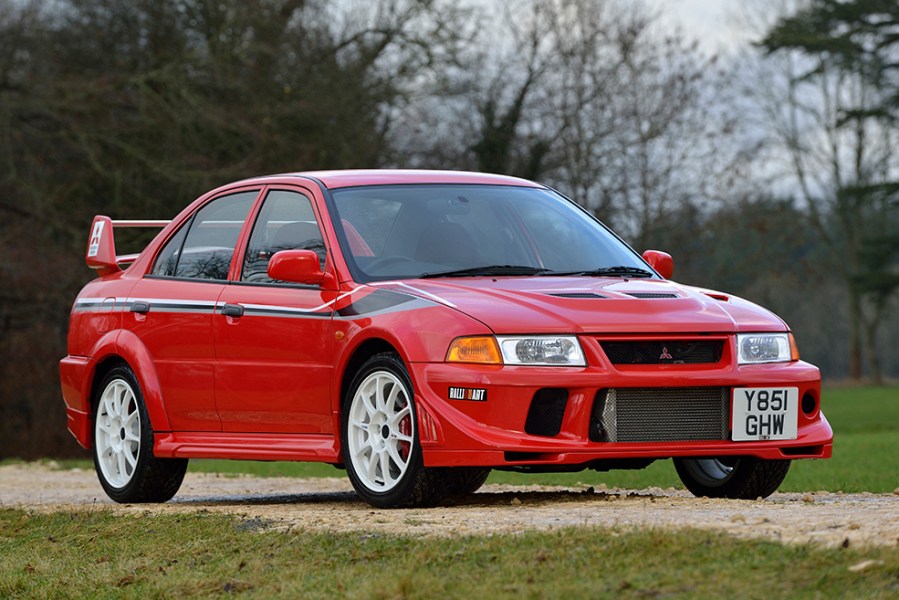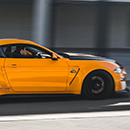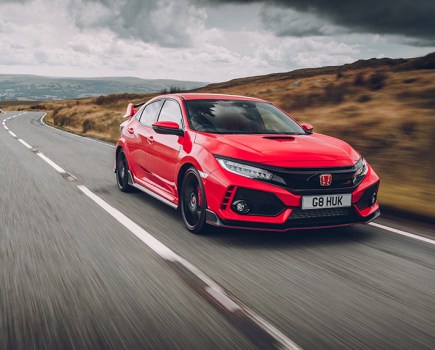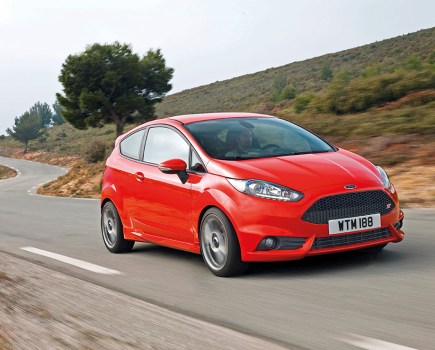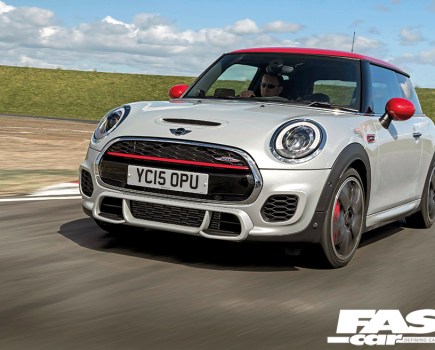The Mitsubishi Evo VI was the first official UK Evo and are still the most sought-after versions. But what should potential buyers look out for?
‘Win on Sunday, sell on Monday.’ This well-known phrase that describes the relationship between a manufacturer’s on-track performance and their forecourt sales couldn’t be more appropriate than when it comes to explaining the automotive niche of rally replicas. With the road cars bearing such close resemblance to those seen tearing through the muddy lanes of a Welsh mountainside or snow-covered Finnish forest, it was only logical that manufacturers would capitalise on their success on the special stages to bolster their sales in the showrooms. And the public has been smitten ever since. Even now, with many of the original manufacturers and models no longer competing in the WRC, the cars that forged their reputations in the heat of rally battle are still seen as performance icons to be revered. And no model better lives up to its rally rep tag than the Mitsubishi Lancer Evolution VI.
Mitsubishi Evo VI History
The first Evo to be officially available in the UK, the Mitsubishi Evo VI was launched in January 1999. 7000 were made in total, with improved aerodynamics over the outgoing car, offering better cooling and less drag, along with engine tweaks to improve response and reliability.
UK cars were imported by Mitsubishi Motors and prepared by Ralliart UK. Most came as GSR-spec, but a cheaper RSX model was also launched to combat the draw of Subaru’s keenly-priced Impreza rival.
Although all Evos are essentially a derivative of the full-blown WRC heroes, the one variant that really nails the rally-rep promise is the Evo VI Tommi Makinen Edition (TME). Launched in March 2000 to commemorate the flying Finn’s fourth consecutive Drivers’ Championship, the 5000 TME cars were the closest yet to the real thing, available with an optional £700 graphics pack that mimicked the look of the World Rally Car. They also benefitted from a titanium turbocharger and 17in Enkei wheels that shared the same design as the WRC car.
Such was the demand for the Evo platform, that a more potent Evo VI Extreme was released. Prepared by Ralliart UK, the Extreme raised power to 340bhp and 303lb ft of torque and nailed the 0-60 sprint in just 4.0 seconds with 100mph achievable in just 10. But if this still wasn’t enough, the Evo VI RS450 model, again built by Ralliart UK, pushed the envelope even further with 380bhp and 383lb ft of torque slashing a further two-tenths of a second off the 0-60mph time. It also came complete with a rollcage and was the final bow for the VI before the tamer-looking Evo VII was introduced in 2001.
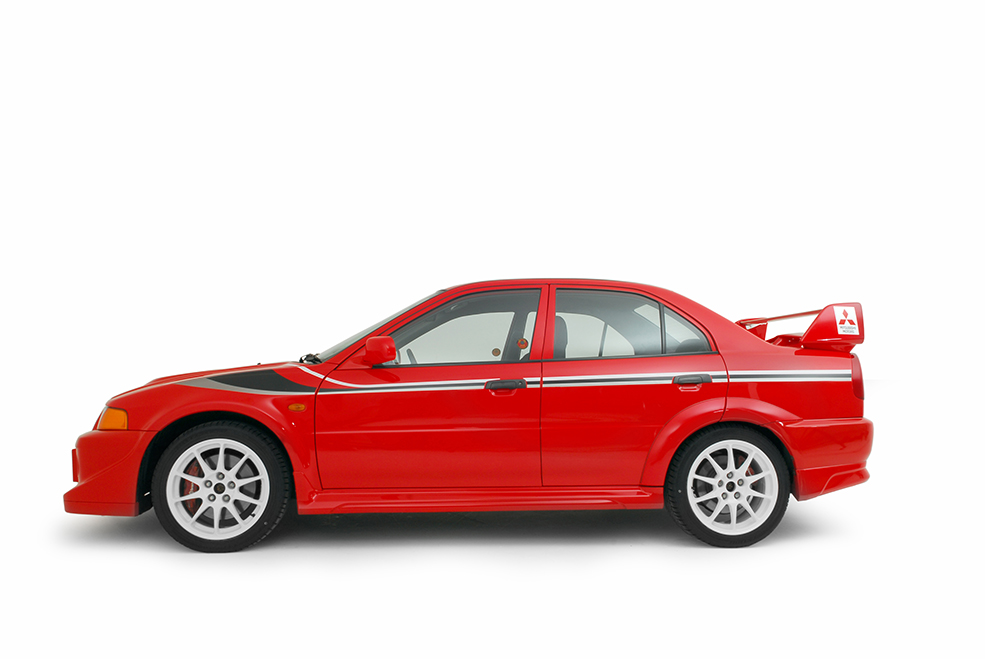
Mitsubishi Evo VI: What to look out for
As all Evos are technically imports, as they are made in Japan and imported into the UK, officially by Colt Cars, or as ‘grey’ imports by a third party import company, it is vital that they are prepared correctly for UK roads. One of the main things you need to check is that it has been undersealed. Japanese cars are not undersealed. They don’t need to be, but in the UK it’s essential that they are undersealed as soon as possible to protect against UK weather and salt that will quickly corrode untreated metal.
When it comes to selecting the right car, documentation, receipts and a complete service history is a must, with a vehicle inspection by a specialist highly recommended. Many Evos have been owned by members of the popular Mitsubishi Lancer Register or are known to members, so don’t be afraid to do some research into the car you are looking at before parting with your cash, especially now as prices are at an all-time high and rising!
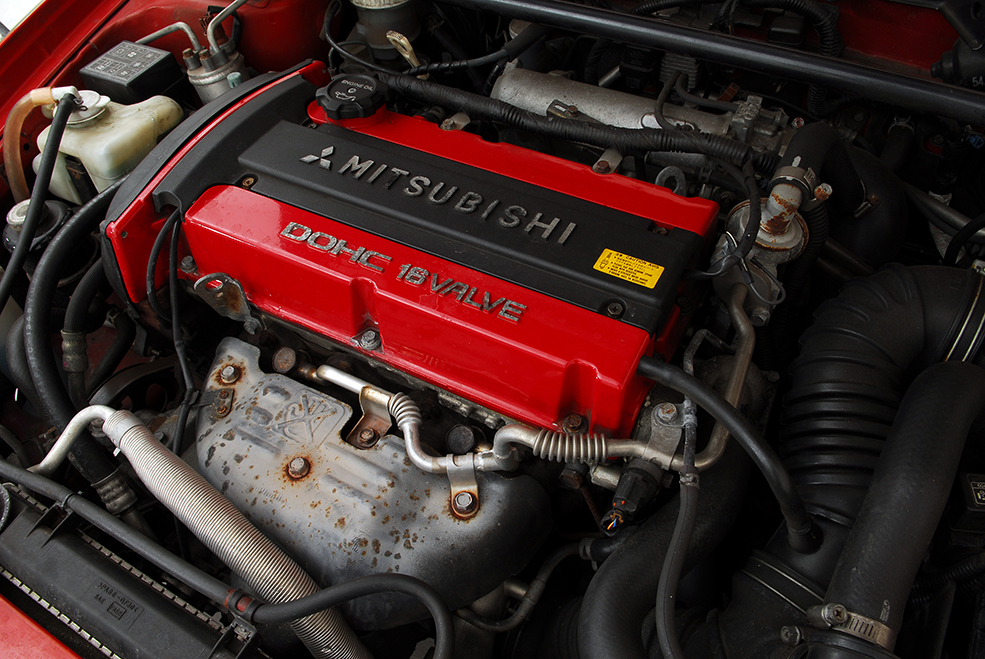
Engine & Transmission
The Evo’s 4G63 2.0-litre turbo engine is strong, but does require regular servicing (fully synthetic oil needs changing every 4500 miles, AYC fluid even 9000, brake fluid every 18,000 miles and spark plugs and timing belts every 45,000 miles). Look for signs of grey or blue smoke, which could indicate an expensive cylinder or turbo problem. White smoke is normal (condensation) as is some black smoke, especially on de-catted cars or those running a bit rich. A ticking sound from the top of the engine is normal and usually disappears when revved. Manifold heat shields are prone to tarnishing, and you should ensure any tuning has been carried out by an expert.
Standard clutches wear quickly whilst front helical LSD bolt failure can be expensive to correct. Look out for worn gearbox output shaft bearings, and any issues with the Active Yaw Control system, which will be highlighted by groans from the rear when turning or by an illuminated AYC warning light. Replacing an AYC diff pump can cost over £3000.
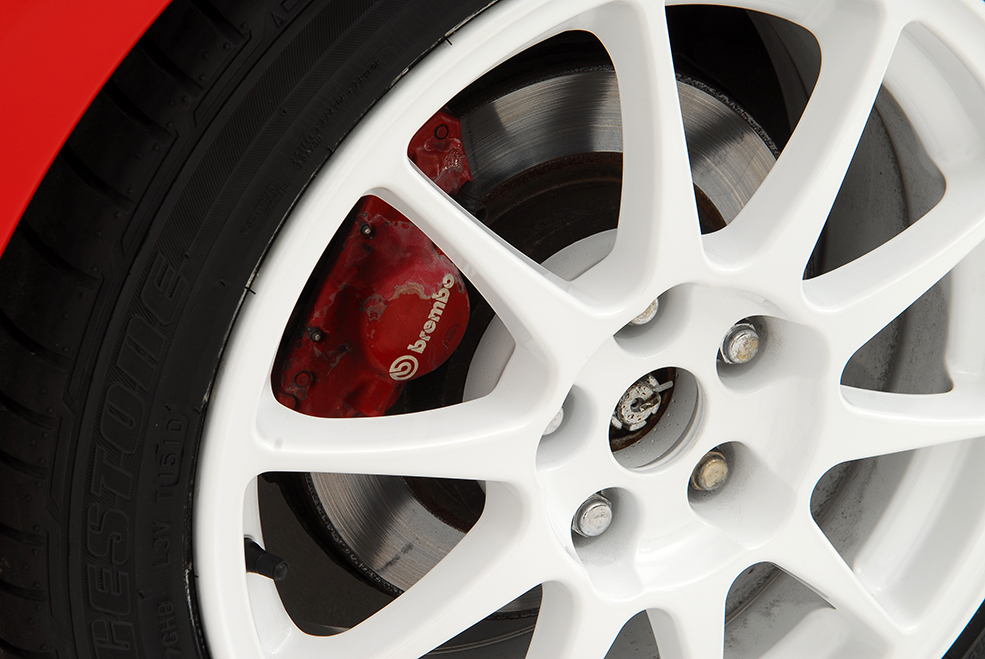
Chassis
The Evo VI has got cracking handling but strut top mount bushes can wear out producing a knocking noise on turning, as do anti-roll bar bushes and drop links. If adjustable aftermarket coilovers have been fitted ask the owner to show you how adjust them and listen out for low-speed rumbling which could indicate worn wheel bearings.
It’s not surprising that the brakes take a hammering on all Evos, but the Evo VI in particular can frequently suffer warped discs, which can show themselves through brake judder when stopping from speed. While far from a cheap solution, the only permanent cure is to replace the original items with a quality aftermarket kit like those from Brembo, AP Racing, EBC or K Sport.
As well as checking all four alloys for any signs of kerb damage or corrosion, also check the tyre wear pattern carefully – correct geometry alignment is essential, so if there’s uneven wear ask questions. Also, as is prudent on any high performance car, mismatched or budget tyres should also start alarm bells ringing.
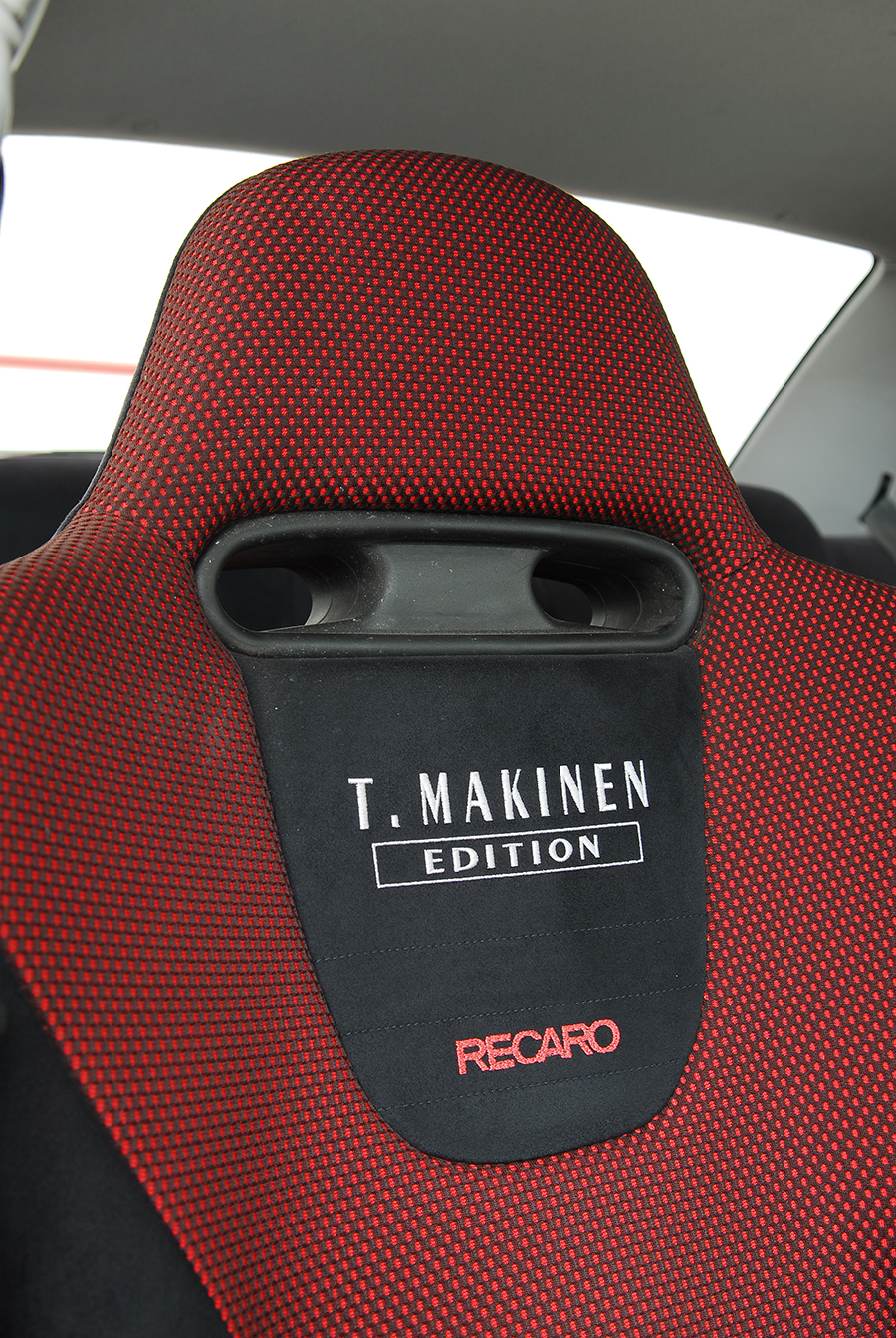
Interior & Electrics
The Evo VI has a hardy interior that seems to wear well and stand up to the passing of time. The standard Recaro front seats are a particular highlight as they not only look good, but also hold you in place well when exploiting the Evo’s legendary handling prowess, although you’ll need a new seat base frame if the recline adjustment is slipping, which can be hard to come by and costly.
Check that all warning lights go off on startup and ensure all electric windows and mirrors, climate control and any optional sunroof controls work correctly. While you’re in there check the floor if possible for signs that a rollcage may have been fitted, which could indicate heavy track use. Ensure any aftermarket gauges such as those for boost and oil pressure or electronics such as turbo timers or boost controllers are installed correctly and work as they should too, preferably with receipts in the documents of installation and set-up by a specialist.
Servicing & Maintenance
Like any valuable or high performance car, keeping the servicing on point is key to protecting your investment and prolonging the life of the car. With the Evo VI, a basic oil and filter service is required every 4500 miles and costs around £170 from a specialist such as Evotune. Add in an AYC service and that jumps to £265, transmission, differential and gearbox oils push it to nearer £450, while Iridium spark plugs add another £60 on top of that.
The cambelt will also need changing every 45,000 miles and costs just under £300. Keeping the underside in good nick is well worth the £400 for a wax oil treatment too, as a full underbody restoration can run to well over £5k if left to corrode. Other than that, replacing the brakes as and when needed with good quality aftermarket alternatives starts at around £490 for a set of front discs and pads.
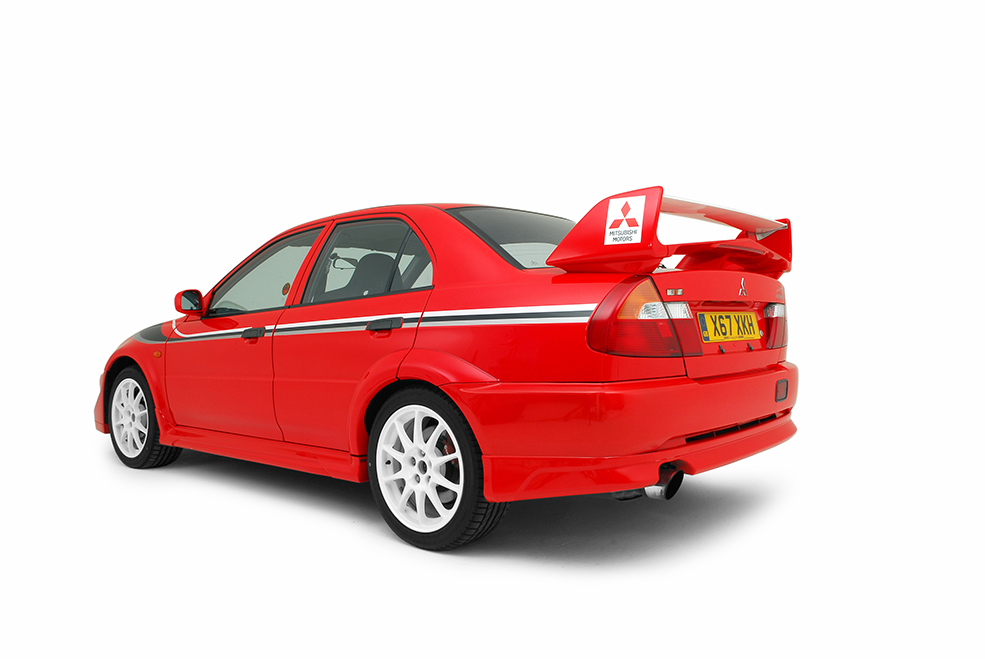
Style
Evos are extremely prone to rust, especially if they have missed out on getting properly undersealed when they first arrived here in the UK, so make sure that you thoroughly inspect the boot lid, sills, suspension mounts, inner wings, chassis legs and around the fuel tank for signs of the dreaded red rot. Stone chips on the front end are practically unavoidable, especially on older, higher mileage cars. The intercooler mesh can also suffer. So a resprayed front bumper isn’t always a cause for concern, as long as any chips have also been treated to prevent rust first.
A more alarming sight would be uneven panel gaps and inconsistencies in the paintwork, which could indicate hidden accident damage that has been poorly repaired. It’s also worth checking in the engine bay and under the boot carpet for signs of repair too. Finally check that the trim is consistent with the model you are buying, Evo Vs and VIs are very similar and a simple bumper and spoiler swap can easily fool anyone who may not be an Evo expert into thinking they are buying the more valuable VI, when it’s actually a V in disguise – an eagle eye on the documentation should help here too.
Mitsubishi Evo VI Top 5 Mods:
- K&N uprated panel filter
- Japspeed 3in de-cat exhaust system
- Walbro high-flow fuel pump
- ECU remap
- Turbosmart uprated dump valve
Want to know more about the aftermarket performance potential of these cars? Read our Evo VI tuning guide.

